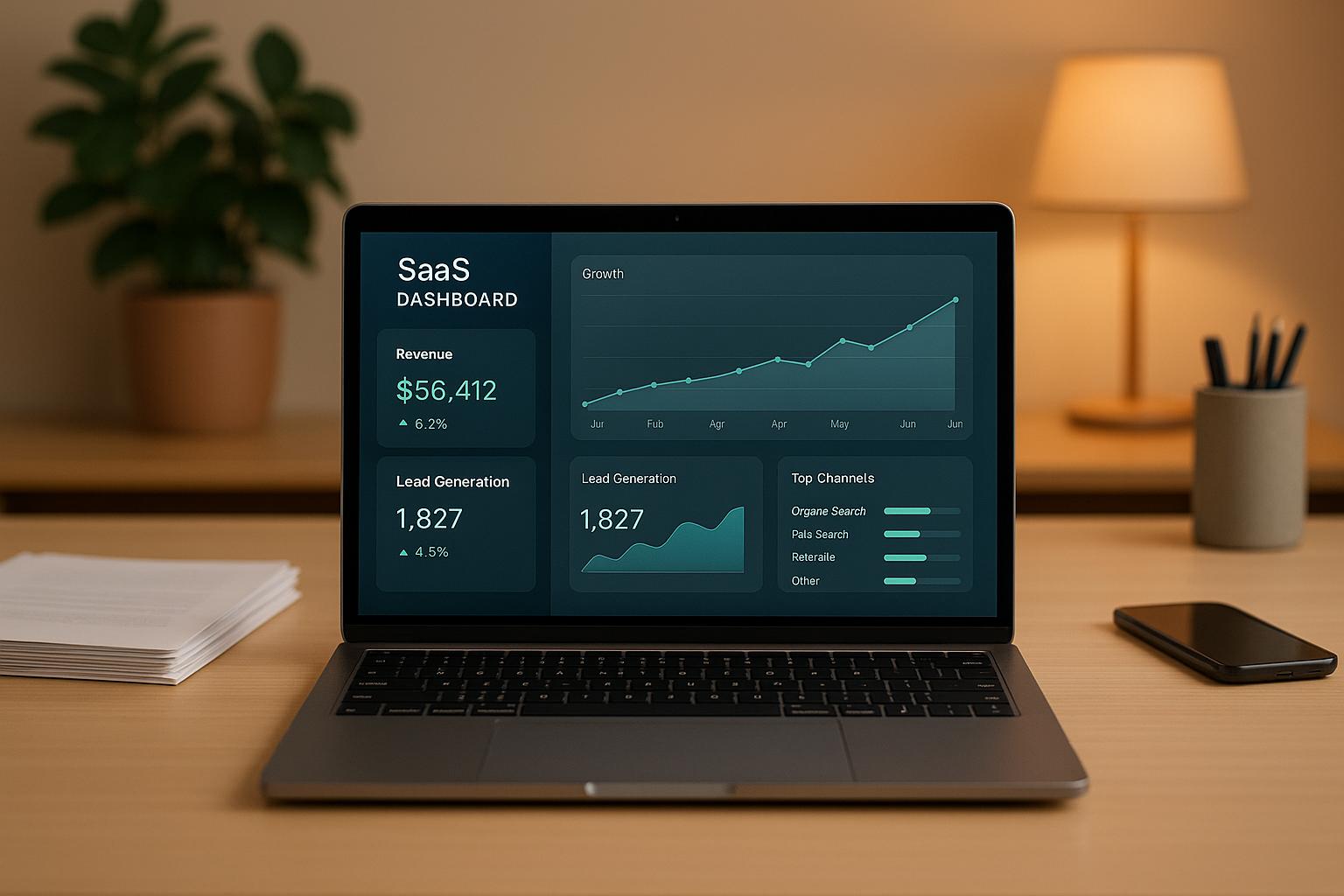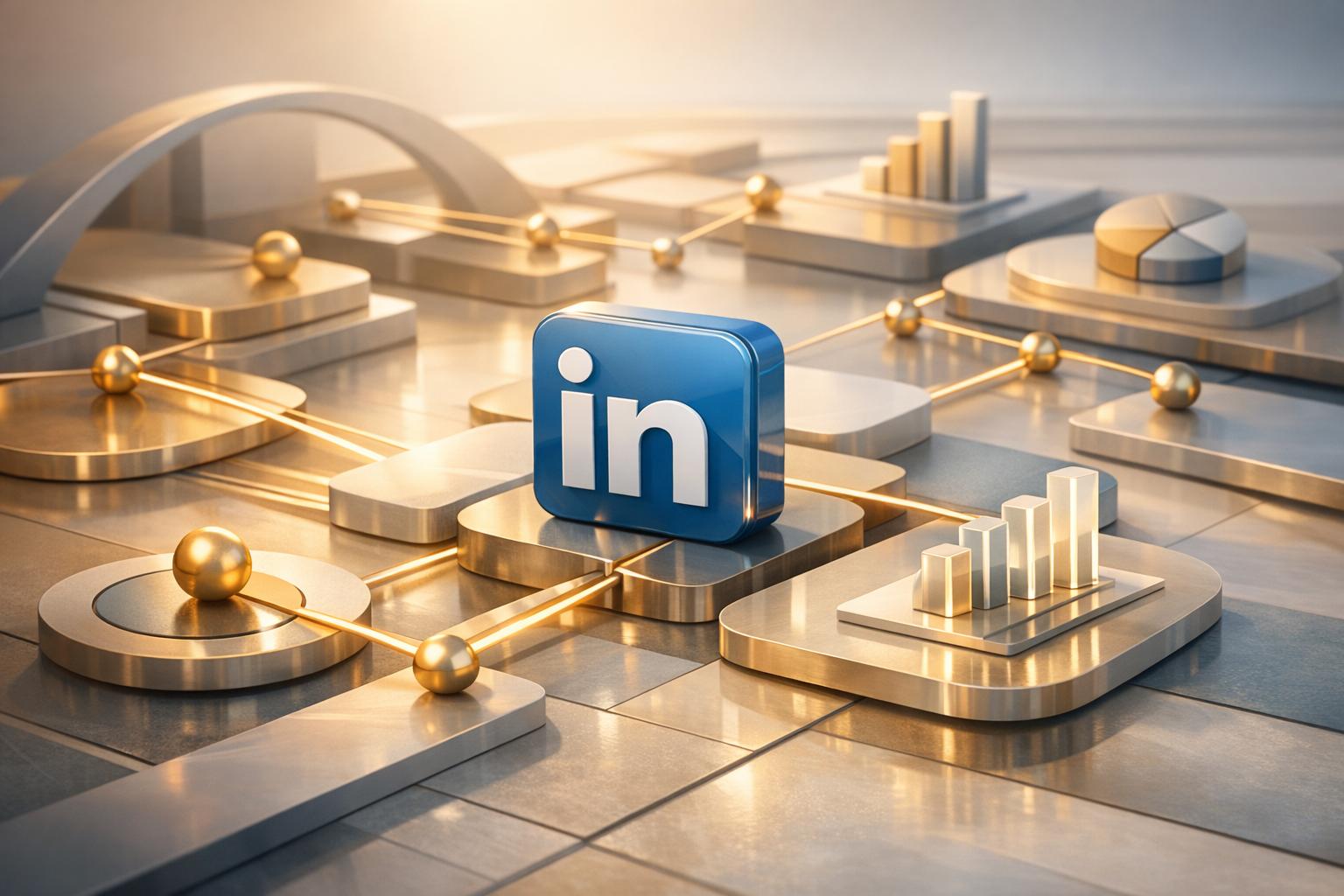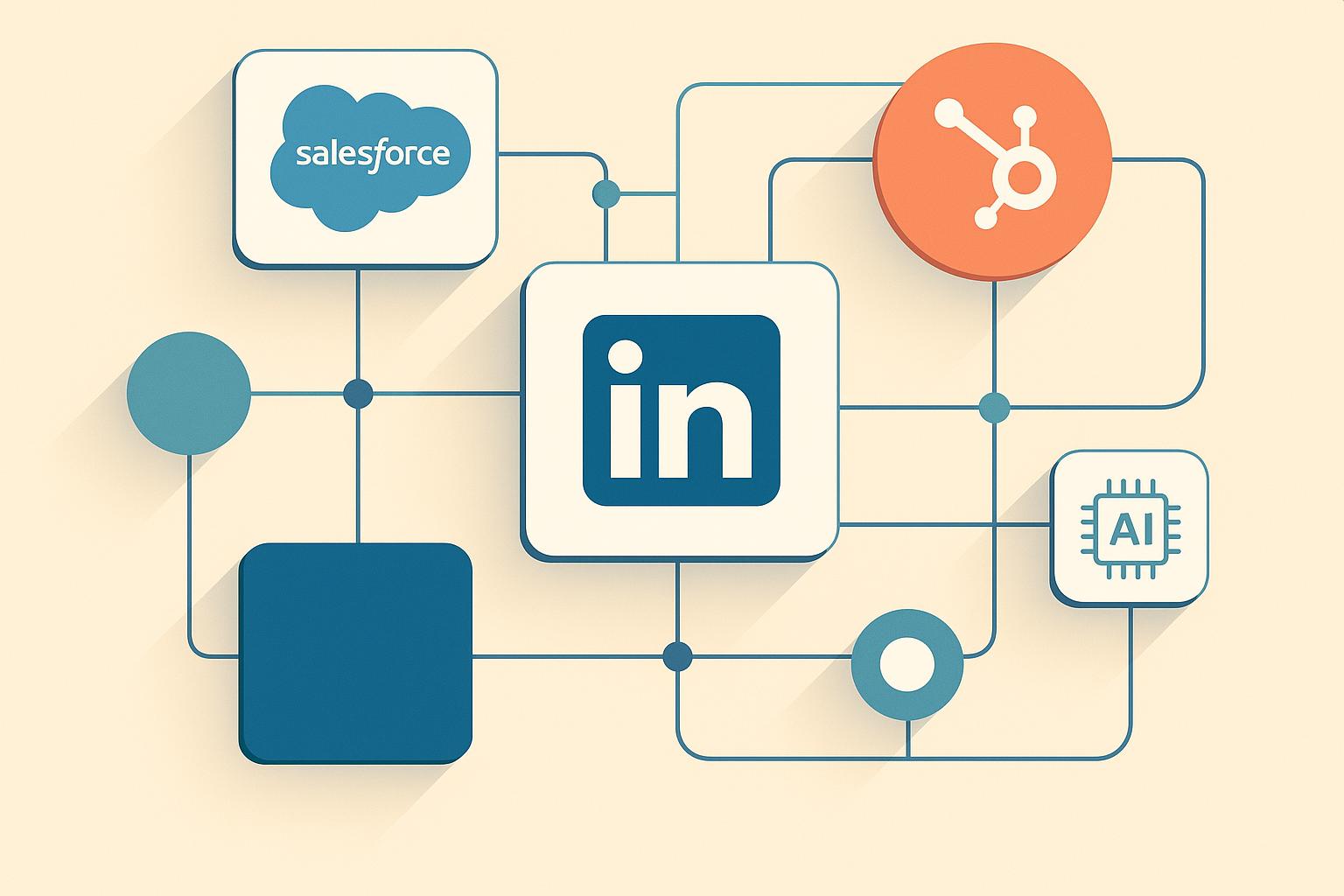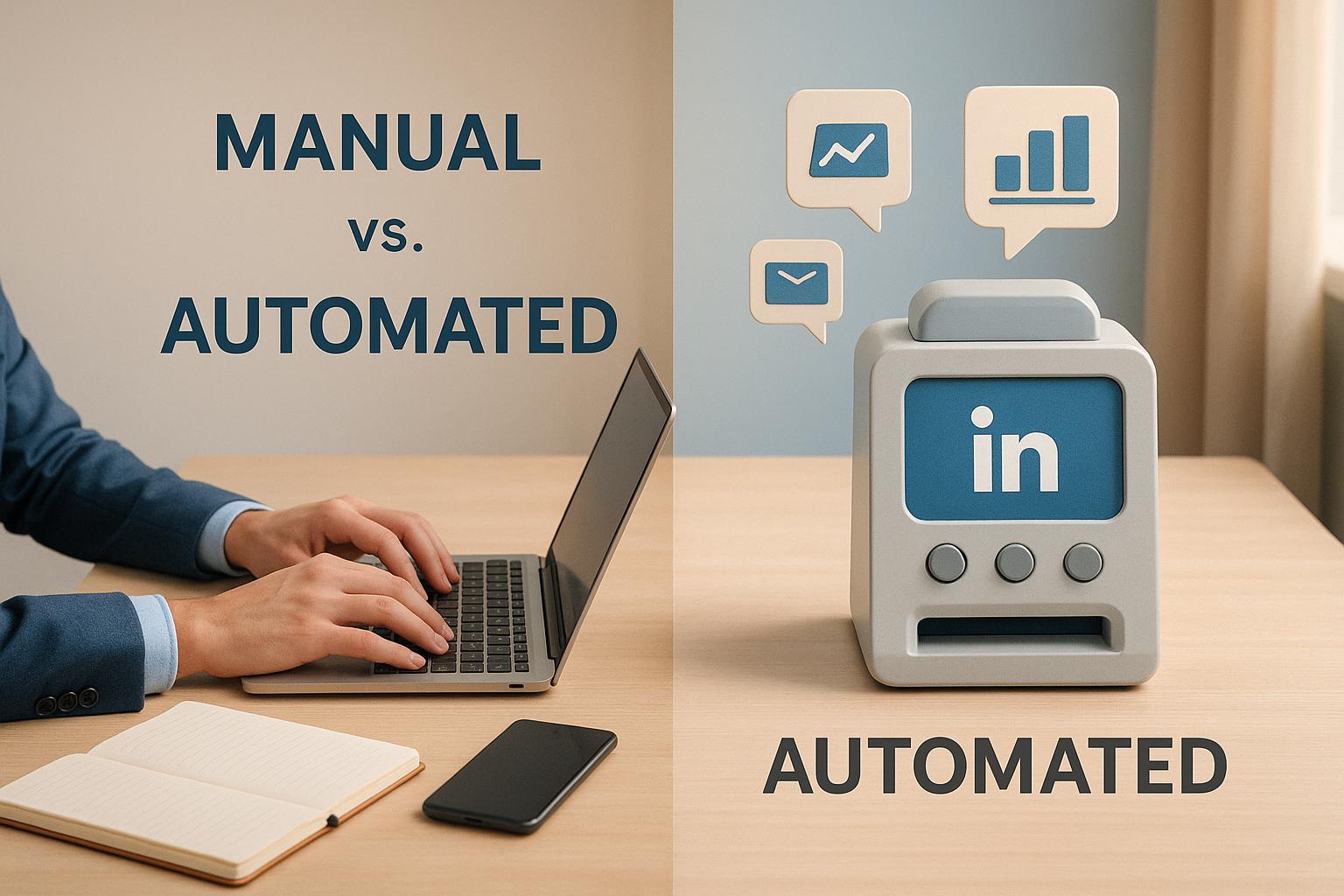
White label B2B lead generation is transforming how SaaS companies grow. Instead of building costly in-house teams, businesses are leveraging white label platforms to generate high-quality leads while keeping their branding intact. These solutions integrate directly into existing workflows, automate processes, and maintain consistency across customer interactions.
Here’s why SaaS teams are adopting white label lead generation:
- Cost Efficiency: Lower expenses compared to hiring and training in-house teams.
- Scalability: Easily handle growing demand without added overhead.
- Integration: Works seamlessly with CRMs and marketing tools.
- Automation: AI-driven tools personalize outreach and handle repetitive tasks.
- Brand Control: Every interaction reflects your company’s identity.
By addressing common SaaS growth challenges like managing costs, balancing lead quality, and fixing fragmented workflows, white label solutions are helping companies achieve better results while focusing on what they do best - closing deals and driving revenue.
Platforms like SalesMind AI automate LinkedIn outreach, improve lead scoring, and centralize communication, making the process smoother for sales teams. While white label options may require more setup, they offer unmatched control and long-term growth potential compared to standard lead generation methods.
AI Lead Generation with White Label Suite & HighLevel - From Offer to $50K MRR (Live Webinar)
Main Benefits of White Label B2B Lead Generation for SaaS Teams
White label B2B lead generation offers practical solutions to help SaaS teams overcome growth challenges. It provides a scalable approach that maintains the quality and consistency your prospects expect, all while simplifying operations and reducing costs.
Lower Costs and Scalability
Building an in-house sales development representative (SDR) team can be expensive. Recruitment, training, and salaries quickly add up, especially as your team grows. White label lead generation offers a more budget-friendly alternative with a predictable subscription model that adjusts to your business needs. This flexibility allows you to handle increased demand without the delays and costs tied to hiring and onboarding new staff. Plus, it frees up your current team to focus on critical tasks like closing deals and strengthening customer relationships.
As these cost savings fuel growth, seamless integration with your systems ensures operations remain smooth and efficient.
Seamless Integration with SaaS Tools
SaaS businesses depend on a network of interconnected tools - CRMs, marketing automation platforms, analytics software, and communication tools. White label lead generation platforms are built to integrate effortlessly into these workflows. By adopting an API-first approach, they ensure lead data flows directly into your CRM, providing real-time insights on prospect interactions and engagement. These platforms can also automate workflows, update lead scores as new data comes in, and trigger actions across your tech stack.
Enhanced Automation and Personalization
Efficiency and relevance are essential in lead generation, and automation paired with personalization makes this possible. AI-driven systems analyze prospect data and behavior to create personalized outreach messages at scale. Meanwhile, automation takes care of repetitive tasks like researching prospects, gathering contact details, and scheduling follow-ups. This frees up your team to focus on high-priority leads. Multi-channel orchestration further refines the process, coordinating outreach across platforms like email and LinkedIn and adapting messages based on engagement levels. This targeted approach ensures your sales team spends their time with qualified, interested prospects rather than chasing dead ends.
While automation and personalization improve efficiency, maintaining brand consistency across all interactions is equally critical.
Consistent Brand Representation
A strong, consistent brand identity builds trust, especially in B2B sales where prospects often research extensively before making decisions. White label solutions ensure that every interaction - whether it’s an email, call, or LinkedIn message - reflects your company’s voice, visuals, and messaging. This allows you to align outreach with your marketing strategy, address specific pain points, and present tailored value propositions. By maintaining control over your messaging, you not only reinforce your brand but also ensure compliance and protect your reputation throughout the sales process.
How SalesMind AI Speeds Up SaaS Lead Generation

SalesMind AI transforms SaaS lead generation by combining smart automation with user-friendly tools, all built on scalable white-label solutions. Designed to simplify and accelerate the process, this platform blends automation with precise targeting while ensuring personalized interactions that help convert leads into customers.
Automated LinkedIn Outreach
LinkedIn is a powerhouse for B2B lead generation, but managing outreach manually can become a logistical nightmare as your team grows. SalesMind AI takes the hassle out of LinkedIn outreach by automating key tasks like sending personalized connection requests, addressing specific pain points, and managing follow-ups.
The platform uses AI to personalize each message, ensuring it resonates with decision-makers. By tailoring communication to match the prospect's profile, it significantly boosts response rates and engagement.
AI-Powered Lead Scoring and Qualification
SalesMind AI doesn't just rely on surface-level data to score leads. Instead, it uses advanced algorithms to assess behavior and assign scores that reflect a prospect's likelihood to convert. This smarter scoring system helps SaaS teams focus their efforts on high-priority leads, saving time and resources.
What’s more, the platform learns from past outcomes, continuously refining its scoring criteria. This ensures your team is always targeting the most promising opportunities, improving efficiency and results over time.
Easy CRM Integration
SalesMind AI integrates effortlessly with popular CRM platforms like Salesforce, HubSpot, and Pipedrive [2]. With real-time data syncing, it keeps all customer interactions and lead statuses up-to-date across the sales pipeline, eliminating the need for manual data entry or constant platform switching [1][2].
The platform also supports API access for custom setups and integrates with Zapier workflows, making it easy to connect with other essential sales tools [2]. This streamlined integration boosts collaboration between sales and marketing, helping teams stay aligned and productive [1][2].
Unified Inbox for Better Communication
SalesMind AI simplifies communication by offering a unified inbox where all prospect interactions are centralized. This single interface allows teams to respond quickly while keeping the conversation consistent.
The inbox provides a complete view of each prospect, including their engagement history, lead score, and key company details. This setup eliminates the need to juggle multiple platforms and ensures smooth transitions between team members, enabling timely and consistent follow-ups.
sbb-itb-817c6a5
Best Practices for Using White Label Lead Generation in SaaS
Using white label lead generation effectively means aligning your strategies with your business goals and prioritizing the quality of leads over sheer numbers.
Match Lead Gen Goals with Sales Objectives
Your lead generation efforts need to directly contribute to your revenue goals and growth milestones. When lead generation operates in isolation, it can lead to wasted resources and missed opportunities.
Start by setting clear revenue targets for each quarter. For example, if your aim is $2M in Annual Recurring Revenue (ARR), calculate how many qualified leads you need based on your conversion rates. With Customer Acquisition Costs (CACs) often ranging from $200 to over $1,000 per customer [4], knowing your conversion metrics is critical for setting realistic goals.
Schedule regular reviews between sales and marketing teams to address any gaps between lead generation and conversions. This collaboration ensures you stay on track and make adjustments as needed.
Once your revenue targets are clear, shift the focus from generating a high volume of leads to attracting the right ones.
Focus on Lead Quality Over Quantity
The key to effective lead generation lies in targeting prospects who closely match your ideal customer profile.
Use advanced segmentation techniques, such as firmographic data, behavioral signals, and engagement patterns, to zero in on high-quality leads. Many white label platforms offer AI tools that can help identify prospects showing strong buying intent - like frequent visits to pricing pages or downloading technical resources.
Referrals often lead to better retention rates and faster sales cycles [4], emphasizing the value of quality over quantity. Tailor your lead generation strategies to consistently attract high-intent prospects.
Take cues from your most successful customers. Adjust your targeting parameters - whether by industry, company size, or location - to improve conversion rates. Keep a close eye on your lead-to-customer conversion rates across different sources and campaigns, and refine your approach based on what works best.
When quality takes center stage, monitoring and improving performance becomes the next critical step.
Track and Improve Key Metrics
Tracking the right metrics is essential for identifying opportunities to improve and sustain growth in the competitive SaaS landscape [3].
Pipeline velocity is a great place to start. Measure how quickly leads progress through your sales funnel, from the first contact to closing the deal. Identifying bottlenecks early allows you to address them before they slow down your momentum. Many white label platforms provide real-time analytics to help you spot and resolve these issues quickly.
Keep an eye on metrics like Cost Per Lead (CPL) and Cost Per Acquisition (CPA) to identify the most efficient lead sources and reallocate your budget wisely.
Focus on leading indicators that can predict future success. Metrics like email open rates, LinkedIn connection acceptance rates, and demo bookings provide early insights, helping you make timely adjustments to your strategy.
Automate your reporting to track conversion rates at every stage of the funnel. With 70% to 80% of B2B marketers worldwide reporting that LinkedIn helps them achieve their goals [4], platforms that offer detailed LinkedIn performance insights can be particularly useful.
Regularly review these metrics and make small, data-driven adjustments. Even minor tweaks to your targeting, messaging, or timing can add up to significant improvements in lead quality and conversion rates over time.
Standard vs. White Label B2B Lead Generation: A Comparison
When deciding between standard and white label lead generation, it's essential to weigh their differences carefully. Each approach offers distinct advantages and trade-offs, making your choice pivotal to your growth strategy.
Standard lead generation relies on pre-existing platforms and tools, used as they come. Outreach efforts - like LinkedIn messages, email templates, and follow-ups - are branded with the platform's default settings, making your campaigns look similar to many others.
On the other hand, white label lead generation allows full customization. Every interaction is tailored to reflect your brand, ensuring prospects engage exclusively with your company's identity.
While standard solutions are quicker to deploy and come with lower upfront costs, white label options demand more initial investment but offer unparalleled customization, flexibility, and control over branding.
Comparison Table: Standard vs. White Label Lead Gen
| Factor | Standard Lead Generation | White Label Lead Generation |
|---|---|---|
| Initial Setup Cost | Lower upfront cost | Higher initial investment |
| Time to Market | Faster campaign launches | Longer setup time for customization |
| Brand Control | Limited by platform branding | Complete control over branding and messaging |
| Scalability | Often limited by platform constraints | Greater scalability options |
| Personalization | Uses standard, templated messaging | Allows advanced and dynamic personalization |
| Integration Options | Basic integration capabilities | Tailored integrations with existing workflows |
| Lead Quality | Quality depends on platform defaults | Improved targeting for higher-quality leads |
| Reporting & Analytics | Basic performance metrics | Comprehensive, customizable analytics |
| Team Training | Minimal training required | May need additional training for advanced features |
| Long-term ROI | Consistent but limited scalability | Higher potential through refined targeting |
If you're looking for a quick and budget-friendly start, standard lead generation might be the way to go. However, if long-term growth, brand control, and scalability are your priorities, white label solutions can provide the tailored approach you need.
Conclusion: Growing SaaS with White Label B2B Lead Generation
White label B2B lead generation has emerged as a powerful tool for SaaS companies looking to scale efficiently while maintaining full control over their brand. By enabling teams to expand outreach efforts without sacrificing consistency or quality, it provides a much-needed edge in today’s crowded market.
The benefits are clear: lower costs, scalability, and seamless integration make white label solutions an attractive option for SaaS growth teams. Unlike traditional methods that often require working within rigid platform limitations, white label tools integrate smoothly into your existing workflows and branding. This adaptability leads to better-quality leads and stronger conversion rates.
Take SalesMind AI, for example. It highlights how technology can operationalize these advantages effectively. By combining automated LinkedIn outreach with AI-driven lead scoring and qualification, SalesMind AI simplifies the lead generation process. Its unified inbox eliminates the inefficiencies of fragmented workflows, allowing sales teams to focus on closing deals and driving revenue.
When compared to standard approaches, white label solutions clearly stand out. While they may require a higher upfront investment, they deliver personalization, advanced analytics, and scalability that are difficult to achieve with other methods. For SaaS companies aiming for long-term growth, this trade-off is well worth it.
Of course, technology is only part of the equation. Success also depends on execution - aligning lead generation with sales goals, prioritizing lead quality, and consistently tracking performance metrics. SaaS companies that master these elements and fully embrace white label platforms are better positioned to thrive in an increasingly competitive landscape.
The real advantage lies not just in the technology itself, but in the strategic control it offers. White label solutions empower SaaS businesses to streamline their lead generation processes while maintaining the scale and efficiency necessary for sustained growth.
FAQs
What makes white label B2B lead generation unique compared to traditional methods when it comes to brand control and customization?
White label B2B lead generation takes a different approach compared to traditional methods by allowing businesses to outsource their lead generation efforts while maintaining their brand's identity. Essentially, a third-party provider works behind the scenes, generating leads under your brand name, using your logo and messaging. This ensures a smooth, consistent experience for your customers.
What makes this method appealing is its ability to build trust in your brand while offering flexibility in campaign execution. Unlike traditional methods, white label solutions can be customized to fit your specific needs. They integrate seamlessly with your existing workflows, creating a personalized approach that aligns perfectly with your business objectives and branding.
What are the main advantages of using white label lead generation platforms with your existing SaaS tools, like CRMs and marketing automation systems?
Integrating white-label lead generation platforms with tools like CRMs and marketing automation systems can transform how your SaaS business handles leads. By linking these systems, you simplify lead management, making it easier to capture, track, and nurture leads without relying on manual processes.
Automation takes a front seat here, reducing time spent on repetitive tasks, minimizing errors, and boosting lead conversion rates. Plus, these platforms come packed with powerful analytics features, letting you track campaign performance in real time. This means you can make smarter, data-backed decisions to fine-tune your sales funnel and drive revenue growth.
How can SaaS companies focus on attracting high-quality leads instead of just increasing lead volume when using white label solutions?
To draw in top-tier leads with white label solutions, SaaS companies should begin by honing in on their Ideal Customer Profile (ICP). This means pinpointing the specific traits, challenges, and objectives of their target audience to ensure outreach efforts hit the mark.
From there, adopting a multi-channel approach can make a big difference. Engaging potential customers across various platforms helps create a more tailored and cohesive buying experience. On top of that, leveraging tools for precise lead filtering and pre-qualification ensures the sales team focuses only on leads that show genuine interest and strong intent.
Lastly, keeping a close eye on performance metrics and adjusting strategies based on these insights can fine-tune the process over time. This not only boosts lead quality but also helps get the most out of your investment.


.avif)


